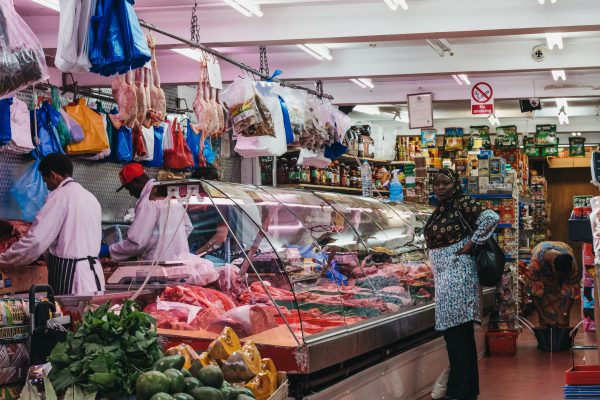It was less of a shock post-Brexit, wasn’t it. Now that we know not to trust our Facebook wall to gauge a national mood. What happened next was familiar too- the apparent surge in racially motivated violence and violent anti-Trump demonstrations – after a year that’s seen our own 22.5% rise in hate crime. 2016 is set to become the year we learnt to expect the unexpected. And as what would have been exceptional a year ago becomes familiar and predictable, it’s clear that the UK is in a vulnerable position.
With a society apparently more ethnically divided than ever before, and a likelihood of unlikely occurrences ahead, now is a good time to be sure that we have the right measures in place to defend ourselves against a rise in extremism.
The official strategy: Preventing Violent Extremism
In government strategy terms, one core defence is Prevent. One of four main counter-terrorism strategies, Prevent aims to respond to the ideology of extremism and to support those identified as vulnerable to its influence. But if you’re familiar with it, it’s probably because of the repeated negative press the programme has received: “a toxic brand” that has “alienated Muslim communities across the country.”
Prevent once again found itself in an unflattering limelight a few weeks back when the Open Society Justice Initiative published its Eroding Trust report, substantiating the claims that the strategy is inspiring “mistrust and discrimination” and “presents a serious threat to human rights”. Of course, there are two sides to the story and many Prevent officers are clear in their view that the strategy is protecting communities against all manifestations of extremism:
“Prevent does not target Muslims. It is about tackling extremism in all forms,” states Ghaffar Hussein, community resilience manager for Newham.
There’s no doubt that the media have paid more attention to Prevent’s failures than its successes. Simon Cole, police lead for Prevent, laments the lack of public awareness of the good news stories- those “real cases where young people’s lives have been enhanced- if not saved- by Prevent”. But whether it is a question of poor PR, or fundamental strategic errors, understanding Prevent’s shortcomings is a good starting point for identifying the broader weak spots in our defences against extremism.
One-way traffic?
 My direct experience of Prevent is of something largely two-dimensional: a poster on a college wall, a community learning checklist with a tick box next to “have you heard of Prevent?”, a mandatory staff training course on safeguarding. Not much in the way of dialogue.
My direct experience of Prevent is of something largely two-dimensional: a poster on a college wall, a community learning checklist with a tick box next to “have you heard of Prevent?”, a mandatory staff training course on safeguarding. Not much in the way of dialogue.
One core element of the programme is the “Prevent duty”, a legal obligation since 2015 for public sector workers to pay “due regard to the need to prevent people from being drawn into terrorism.”
The Prevent duty is supported by a training programme taking the form of a one-hour awareness session, a one or two-day training course, focusing on particular aspects such as far-right extremism or ‘British Values’, or a longer e-Learning course. Yet with a whole catalogue of different providers, the quality of training is variable. Ofsted are among those to register their concerns that too many providers approach Prevent as “a list of conditions just to comply with.”
With 80% of referrals to Channel rejected and numerous accounts of students and others reported to Prevent on the basis of dubious evidence, there are some real indications that our current strategy risks overburdening public sector workers with a responsibility that they don’t know how to fulfil. If this is not addressed, we risk breeding a counter-productive culture of suspicion within public institutions.
“We’re starting to develop a better safe than sorry approach and I think that’s really dangerous,” says Bharath Ganesh, researcher for Tell MAMA!.
Picky partnerships
Insufficient collaboration is another key risk to our protection against extremism, and it is probably the point for which the government has received its harshest criticism.
“At present rather than enlist Muslim communities as equal partners in the fight against terrorism, they instead must live under the shadow of the government’s Prevent strategy,” says Miqdaad Versi, Assistant Secretary General of the Muslim Council of Britain. It started to go this way after the government strategy change of 2011, explains Bharath Ganesh:
“After 2011, the Home Office started talking to a very specific set of people. While these were legitimate voices, with valid things to say, there was not a consultation with a diversity of opinions when the government started to create their new strategy.”
This selective consultation informed some of the most controversial aspects of the government’s approach, in particular the view that people who hold ultra-conservative views on Islam are more likely to become radicalised. With little room in the consultation for those who contest this view, the government have risked alienating significant segments of the Muslim community:
“There’s a conflation between extremism, Al Qaeda and ISIS, and conservative Islam,” explains the editor of Islam Against Extremism, a Salafi Muslim scholar. “On that basis the government isn’t willing to put backing behind groups, organisations, mosques who are seen to be practising a conservative brand of Islam.”
The challenge of diversity
The sheer scope of religious and political perspectives within the British Muslim community presents some real challenges to the government in choosing how to work with communities, and making conservative groups strategic partners would be no less controversial than excluding them.
“The government is right to be selective in who they speak to,” says Ghaffar Hussein. “It’s not right to combat violent extremism with views that most people would still feel to be extreme.”
But one thing we have surely learnt from recent events is that there are severe consequences to communities feeling excluded from decision-making, especially in an area that so directly affects them.
“We’re at the point now where we need to learn how to bring a diversity of voices into this strategy,” says Bharath Ganesh. “Because if we don’t do that then the conversation will be more polarised. There’s too many groups saying, ‘don’t engage with [Prevent], keep away from it’. I think that also prevents better dialogue.”
If our strategy to counter extremism can only accommodate a narrow range of opinions, where will others look to for their voices to be heard?
“Conservative Muslim communities see [the government’s alliance predominantly with liberal Muslim groups] as an attempt to undermine Islam. It feeds into what ISIS are telling average Muslims,” says the editor of Islam Against Extremism.
Room for a little creativity?
When Prevent migrated to the Home Office in 2011, the focus moved away from locally funded “soft” initiatives. With the move, local projects focusing on dialogue and youth engagement (like Tower Hamlet’s “Dangerous Ideas” project, the “Muslim Debating Society” and “Schools Conferences”) were quickly wrapped up.
Over the past 5 years, it has been largely left to communities to run their own initiatives independent of government funding. And there have certainly been good things happening, such as the Big Iftar events during Ramadan, and MCB’s annual Visit my Mosque events, but innovation is difficult when it relies on limited resources and the good will of volunteers.
This might be about to change. The government announced earlier this year its first provision of funding for local initiatives through Building a Stronger Britain Together. This initial £800,000 is at least an opportunity to demonstrate that local initiatives bring both some much-need creativity to the fight against extremism, and a means to engage with people in a way that a government official or a policeman would find very tricky.
What next?
Counter-extremism is entering a new phase: some return of funding for local initiatives; a rebranding and “stepping-up” of Prevent as it becomes “Engage” and new threats to face as racist views are increasingly legitimised by people in positions of authority. From one point of view, generating an effective strategy is not complicated. It takes two things: good communication and genuine collaboration.
The sort of communication that doesn’t just spell out responsibilities, but creates an environment for asking difficult questions, building understanding, generating that “all-in-this-together” feeling. And the sort of collaboration that convinces people to put aside irreconcilable differences of ideology or religion because their common aim is more important. Of course, in practice it’s not quite as straight-forward. But if we get those foundations right, there’s no reason why this threat can’t be what makes our defences stronger.
by Emily Danby
Thanks to Bharath Ganesh, researcher for Tell MAMA!, Ghaffar Hussein, community resilience manager for Newham and the editor of Islam Against Extremism (who asked to remain anonymous) for their significant contributions to this article.
This post was originally featured here.





